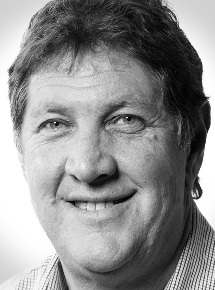Sound and Solid to Elite: A case study by Ray McLean
 by Ray McLean
by Ray McLean
The journey from delivering a sound and solid result to achieving an elite level of performance will only happen when an organisation has the motivation to break through the comfort zone and challenge capable managers to become elite leaders.
What is the difference? – Capable managers focus on the mechanics of the business almost exclusively.
By this I mean that they develop and manage solid strategies.
They have sensible and achievable KPIs and providing there are no extenuating circumstances, deliver a healthy bottom line. Break out the cigars.
Teams who have healthy mechanics in their business can be seduced into labelling this as best practice or high performance. At Leading Teams we conduct about 20% of our business in elite sport and this scenario would be a little like winning more games than you lose and laying claim to being a high performing team.
Let us consider where elite leadership might take us and how.
Elite Leaders have a balance in their focus between the MECHANICS of the business and the DYNAMICS. We would define dynamics as the mood, vibe, values or culture of the business.
In tough times the elite leader would not be distracted into fiddling with the mechanics to improve performance but would focus more aggressively on the dynamics of the team.
Elite leaders create clarity in organisations. They ensure their people are clear about the purpose of the organisation and that every person knows and believes in the value of their individual role. In creating clarity every person is clear about what the organisation values in terms of behaviour, particularly around “what is unacceptable to us”. The extent to which these behaviours are congruent is the realm of elite leadership. If the behaviours have no real meaning and are not considered relevant to elite performance then tear down the signs. I saw this in action many years ago when I attended a local football club. They had their values statement on the wall and it said in bold and brave letters – ONE in, ALL in. However someone else had added under the statement – “until the shit hits the fan and then it is every man for himself”.
Imagine if an organisation let individuals write what they thought were the “real” values and accepted behaviours of the organisation on the wall. In an elite leadership environment most staff would agree that what is said is done. That is the ultimate test.
So how do we go from a meaningless sign on a wall to a behavioural framework that drives performance? In a word – Relationships.
An elite leader places high value on all staff having strong professional relationships with stakeholders that affect their performance. The reasoning is that the combination of a clear behavioural framework and a strong professional relationship enables people to have the more difficult or genuine conversations around performance. The team (and the individuals within) develop a capacity to self-manage.
Case study
We are currently working with a manufacturing group whose production staff have basic competencies from a technical view-point but historically have had no “soft” skills training. The owner/leader wanted to move from comfortable to elite. His first step was to engage the staff in conversations around the behavioural framework.
Is there any behaviour on the team we tolerate that we shouldn’t?
How are we viewed as an organisation (from a workers/suppliers and customers perspective)
Is there any behaviour I display that I shouldn’t? (His capacity to listen to staff and their feedback was a key trigger in the improvement process)
What would staff say about your behaviour?
He then took them through a structured approach to building sustainable working relationships and implemented regular reviews against the framework.
The changes within the organisation we have seen since the manager shifted to an elite level leader include:
A preparedness from staff to suggest a better way – Workers used to have an attitude that you pay for our body not our mind.
Honesty around faults and performance – Previously, poor workmanship would have been covered up and the faulty product sent out. Having all staff looking out for faults has had a significant impact on the number of faulty items being returned.
Improved customer service and relationships – This is simply a flow on from having greater attention to detail. Customers now have a greater level of trust in the company.
Increased ability to challenge each other about the quality of work produced. In the past workplace issues were handled via a pecking order. There tended to be either a fight or flight response to conflict. This staff group now has a commitment to resolving issues without bullying.
Importantly, the bottom line has also improved!
Some people try to over intellectualise elite leadership. In the end it is simply about galvanising and empowering people and action. Reading a book on leadership unfortunately does not make you a leader. You are required to move from the land of knowing something to the land of doing something!